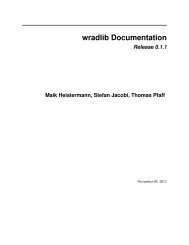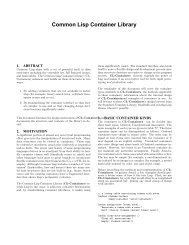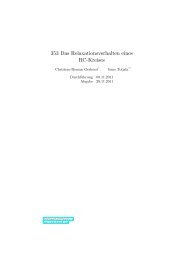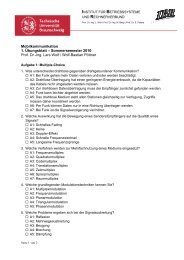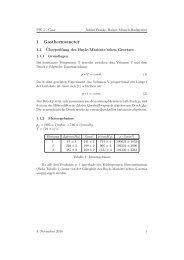P-Technique Demonstrated in Determining ... - Bitbucket
P-Technique Demonstrated in Determining ... - Bitbucket
P-Technique Demonstrated in Determining ... - Bitbucket
Create successful ePaper yourself
Turn your PDF publications into a flip-book with our unique Google optimized e-Paper software.
RAYMOND B. CATTELL, A. K. S. CATTELL, AND R. M. RHYMER 281<br />
though highest <strong>in</strong> that with which we should expect its nature (Emotional<br />
responsiveness) to make it cognate. Exploration of the possibility<br />
that this test factor is some more basic second-order factor reveals<br />
only a slight suggestive resemblance of pattern to second-order<br />
factor SH (7), but noth<strong>in</strong>g conv<strong>in</strong>c<strong>in</strong>g. The agreement of the mean<strong>in</strong>g,<br />
and even of the label, of each of the Test Factors 1, 2, and 4 (assigned<br />
to them at a stage of the research long preced<strong>in</strong>g the f<strong>in</strong>al factorization)<br />
with the behavioral mean<strong>in</strong>g of the personality factors<br />
with which they identify, is strik<strong>in</strong>gly good.<br />
What requires explanation, <strong>in</strong> view of the very def<strong>in</strong>ite identification<br />
of these five P-technique with R-technique factors, is the absence<br />
of some six commonly found factors <strong>in</strong> R-technique. Factor B, general<br />
ability, is obviously absent because we <strong>in</strong>cluded no <strong>in</strong>telligence-demand<strong>in</strong>g<br />
tests. Dom<strong>in</strong>ance "E" is present only as a specific, <strong>in</strong> the rat<strong>in</strong>g<br />
variable set to estimate it, because Dom<strong>in</strong>ance is quite a narrow<br />
factor affect<strong>in</strong>g only social aspects of personality (7). D, sthenic emotionality,<br />
has always been an elusive factor, <strong>in</strong>sufficiently established<br />
by recent work even <strong>in</strong> R-technique. J and K are very slight factors, requir<strong>in</strong>g<br />
populations of two or three hundred cases for their def<strong>in</strong>ition.<br />
Consequently we should not expect them here to acquire variance <strong>in</strong><br />
anyth<strong>in</strong>g but the variable specifically set to measure each. The only<br />
absentee for which no adequate cause is obvious is the Factor I, Anxious,<br />
imag<strong>in</strong>ative emotionality vs Tough poise. In relation to the general<br />
population our subject is extreme <strong>in</strong> I and <strong>in</strong> B, but otherwise<br />
average. Possibly there is some connection.<br />
The rather large correlation of A and F (positive) and of G and<br />
H (negative) may be peculiar to this subject. The exact correlation<br />
among factors <strong>in</strong> one subject promises a new source of personality<br />
uniqueness and one which may be of considerable diagnostic value.<br />
The first correlation might be <strong>in</strong>terpreted, <strong>in</strong> view of our general observation<br />
of this subject, to mean that when she is <strong>in</strong> a cyclothyme,<br />
responsive adjustment-state she tends to shift toward the cheerful<br />
rather than the depressive group of emotions, at least <strong>in</strong> this life situation.<br />
The second may be a form of dynamic equivalence: that when<br />
more than average energy is available it shifts either <strong>in</strong>to the carefree,<br />
adventurous sociability of H or <strong>in</strong>to a heighten<strong>in</strong>g of persistent, seriious<br />
application of G, so that they become <strong>in</strong>versely related. These<br />
and other more speculative hypothetical questions of the relation of<br />
physiological to personality factors will be taken up <strong>in</strong> a later paper,<br />
<strong>in</strong> which the day-to-day changes <strong>in</strong> these five factor measurements<br />
will be related to daily happen<strong>in</strong>gs, records of dreams, and cl<strong>in</strong>icaltype<br />
observations. Any fuller <strong>in</strong>terpretation will be profitable, however,<br />
only when these f<strong>in</strong>d<strong>in</strong>gs can be aligned with those of the second





